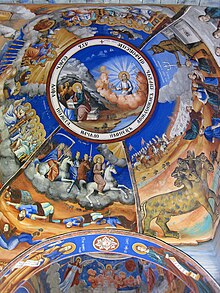Prophecies of the end of the world in 2012 are based on a misreading of the Mayan calendar. This is pointed out in Robert Bolton's excellent study of the cycles and philosophy of time, The Order of the Ages. Himself a Catholic Neoplatonist, Dr Bolton examines the various calendrical systems and prophecies of different ancient civilizations, finding a number of significant convergences, indicating the possible end of a cycle of history (NOT "the end of the world") towards the end of the present century. The Mayan calculation is complicated, but if Dr Bolton is right we should take the Mayan "year" of 360 days as a symbolic round number. The Mayans were as aware as anyone of the fact that a solar year was a few days longer than this, and if this fact is taken into account the end of the present cycle would come around 2087, according to their calendar.
Of course, this kind of speculation will not convince or even interest most people, but some would like to go further and explore the prophecies of the Book of Revelation, comparing these to the messages of the various apparitions and visionaries approved by the Church (Fatima, La Salette, and so on). For those readers, Emmett O'Regan's book Unveiling the Apocalypse will be a delight. In it he even goes in some depth into the ancient number symbolism of the Bible, called Gematria. His website (follow the link I just gave) gives further material and offers a sample chapter of the book. Some of these topics, such as Gematria, also come into my book All Things Made New, although unlike O'Regan in my "spiritual" interpretation of the Apocalypse I don't refer to extra-scriptural prophecies and I don't come to conclusions that relate to specific dates and historical events.
Illustration: Fresco from Osogovo Monastery, Macedonia (Wikimedia Commons)
Of course, this kind of speculation will not convince or even interest most people, but some would like to go further and explore the prophecies of the Book of Revelation, comparing these to the messages of the various apparitions and visionaries approved by the Church (Fatima, La Salette, and so on). For those readers, Emmett O'Regan's book Unveiling the Apocalypse will be a delight. In it he even goes in some depth into the ancient number symbolism of the Bible, called Gematria. His website (follow the link I just gave) gives further material and offers a sample chapter of the book. Some of these topics, such as Gematria, also come into my book All Things Made New, although unlike O'Regan in my "spiritual" interpretation of the Apocalypse I don't refer to extra-scriptural prophecies and I don't come to conclusions that relate to specific dates and historical events.
Illustration: Fresco from Osogovo Monastery, Macedonia (Wikimedia Commons)

















